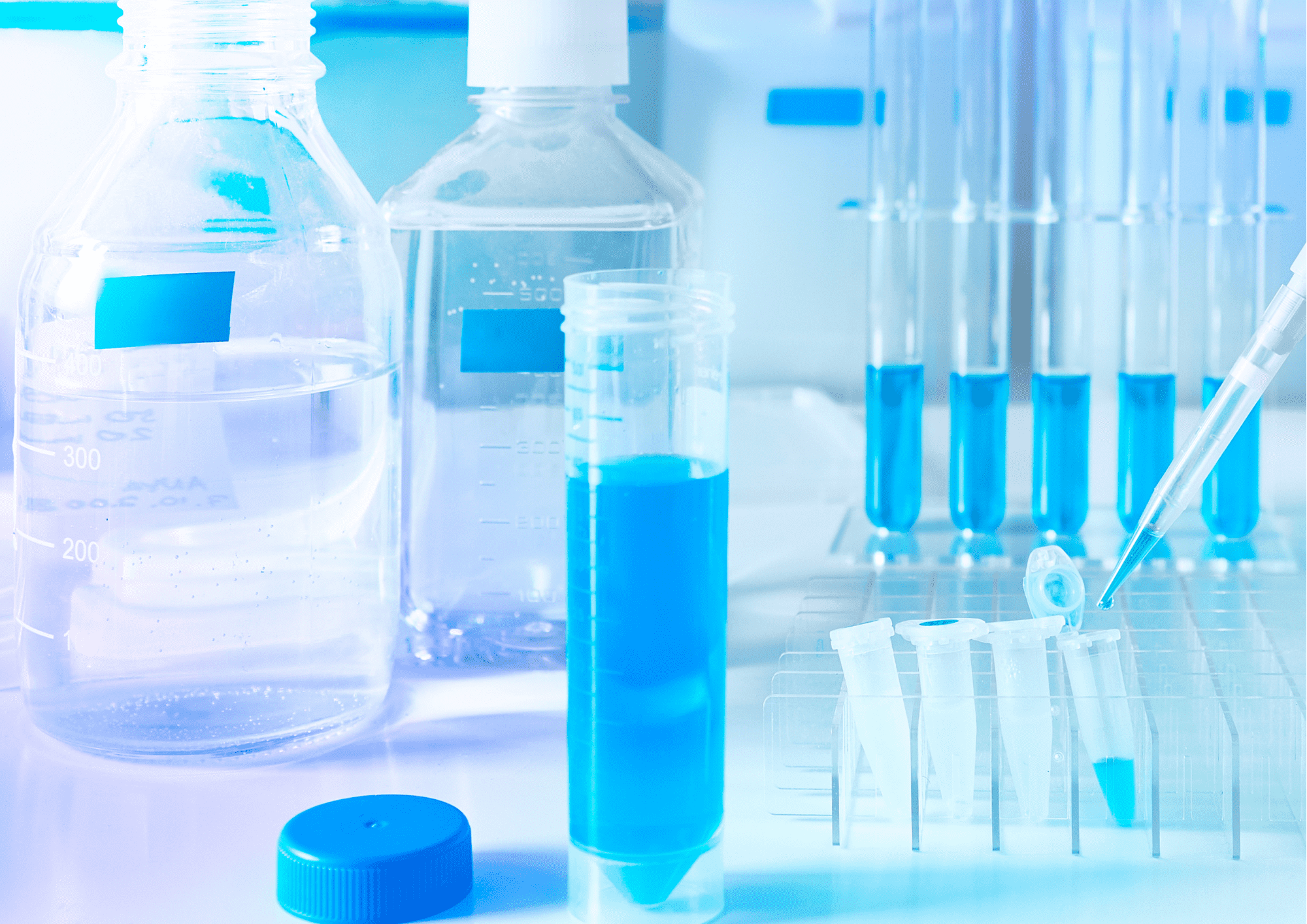Buffer
Biomolecules, cells, and tissues used in biochemical experiments are greatly affected by pH. Therefore, various buffers are used in the experiments to reduce pH fluctuations. Fujifilm Wako offers a line-up of various types of buffers such as Tris buffers, phosphate buffers, and Good's buffers, which are commonly used in biochemical experiments. In addition, high-concentration buffer stock solutions, as well as 1x buffers that require no dilution, are available to meet various needs of researchers.
Product Line-up
More Information
What Is a Buffer?

A buffer is a solution that can resist changes in pH (buffering) caused by the addition of acids or alkalis. It is often a mixture of a weak acid and its salt or a weak base and its salt.
Examples of buffers
- Acetate buffer (acetic acid and sodium acetate)
- citrate buffer (citric acid and sodium citrate)
- phosphate buffer (sodium dihydrogen phosphate and disodium hydrogen phosphate)
Chemical reactions in the organisms generally proceed well only within a narrow pH range near neutrality, and many of the reactions generate or consume hydrogen ions, resulting in a change in pH. In the organisms, pH homeostasis is maintained by the buffering capacity of carbonate-bicarbonate salts, phosphate salts, and amino acids. Chemical reactions in experiments must also be performed in solutions with buffering capacity. To date, buffers suitable for different experiments and reactions have been developed. Selection of buffer is an important factor that determines the success or failure of an experiment.
Principle of Buffering
The principle of buffering is described below using acetate buffer as an example. Acetic acid does not completely ionize in aqueous solution and is in equilibrium, as shown in (1). On the other hand, sodium acetate almost completely ionizes in aqueous solution, as shown in (2). Therefore, CH3COOH and CH3COO- coexist in the acetate buffer.
CH3COOH ⇌ CH3COO- + H+ ・・・(1)
CH3COONa → CH3COO- + Na+ ・・・(2)
Adding an acid (H+) to this solution causes little change in pH, because the acetate ion CH3COO- receives the H+.
CH3COO- + H+ → CH3COOH ・・・(3)
Conversely, adding a base (OH-) also causes almost no change in pH, because acetic acid neutralizes the OH-.
CH3COOH + OH- → CH3COO- + H2O ・・・(4)
Thus, the addition of an acid or base to the buffer does not significantly change the pH of the solution. The effective pH range of acetate buffer is 3.7~5.6 (18°C), which is determined by the ratio of the concentrations of the weak acid and its salt, and the dissociation constant pKa of the weak acid. When selecting a buffer, it is necessary to know the effective pH range of the buffer.
References
- “Biochemical dictionary 4th ed.” ed. by Oshima, T. et al., Tokyo Kagaku Dojin, Japan, (2007). (Japanese)
For research use or further manufacturing use only. Not for use in diagnostic procedures.
Product content may differ from the actual image due to minor specification changes etc.
If the revision of product standards and packaging standards has been made, there is a case where the actual product specifications and images are different.
The prices are list prices in Japan.Please contact your local distributor for your retail price in your region.



